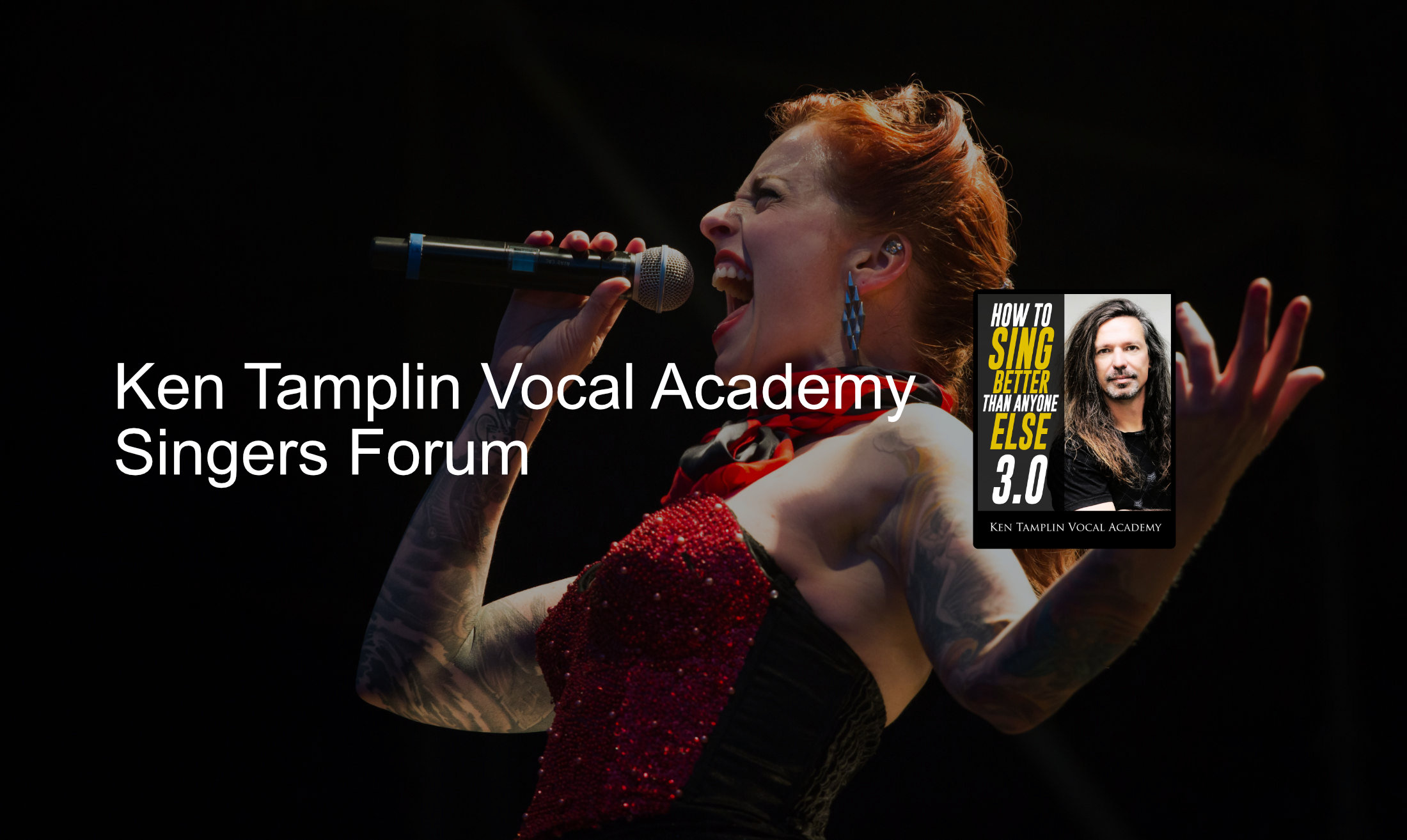Head Tilted Back
I have noticed that many professional/famous singers (including yourself) sometimes tilt their head back slightly (to a greater or lesser degree) while singing. I realise that in some instances this is pure showmanship, but I was just wondering if there was any technical reason/benifit for it?
Gary
Best Answers
-
Kokonuht Member, Enrolled Posts: 658
Ken has talked about this before if I'm not mistaken and there is totally no benefit for it but it's more for showmanship. Ken does tell us to never tilt the head backwards. I'm not sure of the scientific reason however I'm sure it doesn't benefit you. It kinda causes more strain on your neck and in the end cause a lot more tension for your singing.Ken addresses this issue on student Sara Loera on this youtube video
-
 Ken Tamplin
Administrator, Moderator Posts: 446
Ken Tamplin
Administrator, Moderator Posts: 446
Hi Guys,
The head should be directly on (forward. not up or down).
Most people tilt their head back because it constricts airflow to squeeze out notes.
You mentioned the queen demo and let me explain.
If you watch closely, I am actually manipulating the "sweet spot" of the microphone so as to not distort or overload the pre-amp.
If you notice there is a LOT of dynamic range on the montage so you will see me "working" the mic.
When my head was tilted back, this was not for "vocal technique" but for "mic technique". (very good question and observation though).
You will however also at some point in your singing career have to negotiate the body in different (for lack of a better term let's call them) "pose" positions.
So if you are running around, you'll have to manage your air.
If you are loking from one side to another, open throat positions.
Looking up, be careful not to choke off or stricture air. (Lemmy from Motorhead has made a career on this...loking up).
But in the end, if you are looking for those long big round phat legato notes (Steve Perry, Sam Cook, Whitney Houston or whomever), keeping your head straight on is what you are looking for


Answers
Hi Koko, thanks for the link, unfortunately it only seems to want to take me to youtube homepage and not the actual video you speak of. If you could give me the title of the video I will find it manually, thanks, Gary
KEN TAMPLIN COACHES SARA LOERA HOW TO SING - I WILL ALWAYS LOVE YOU
Hi Koko,
Thanks I watched the video; I see what Ken is saying there aboutSara looking up for some of those high notes and cutting air flow/ open throat etc, she was looking up as a muscle memory crutch.
The kind of thing I am talking about is more seen in Ken's youtube video's of him sitting at the studio mic singing. The mic is positioned quite high up and during some phrases Ken seems to have the front of his neck extended or stretching up slightly to meet the mic. For example; Ken's Freddie Mercury melody video.
I have seen loads of great singers doing this very same thing, it must have some positive effect...if done correctly of course:-)
Yes, some singers do tend to Look up/tilt their head back/lean back/go up on tip toes etc. as if reaching up for high notes; and you are right Koko, these are all bad techniques and habits that can cause strain and tension. Then there are of course those singers that can already hit those high notes with comparative ease and then add the spectacular lean back/reach up posture purely for dramatic effect...Freddie Mercury is the perfect example of that.
In musical theatre, singers sometimes use a technique called "looking up to the gods" combined with a technique called "anchoring" when they are belting and this results in a kind of braced body posture which is actually part of the technique; and I was wondering if Ken is doing something along similar lines with his posture when we see him sat at the mic.
I noticed sometimes Ken will back away from the mic (to compensate for dynamics) and belt a phrase really loudly, and he seems to be in a kind of braced position for this, then he will shake that off, come back in closer for the next phrase which he might sing with his face tilted up slightly to the mic.
Thanks Ken,
This is great information about working the mic and finding it's sweet spot. I didn't know about this stuff so it's good to have this new insight!!
It might make a good topic for a future webinar "Basic and Advanced Microphone Technique For Studio and for Live Work".... just an idea:-)
Thanks again Ken and Koko for your time.
Gary